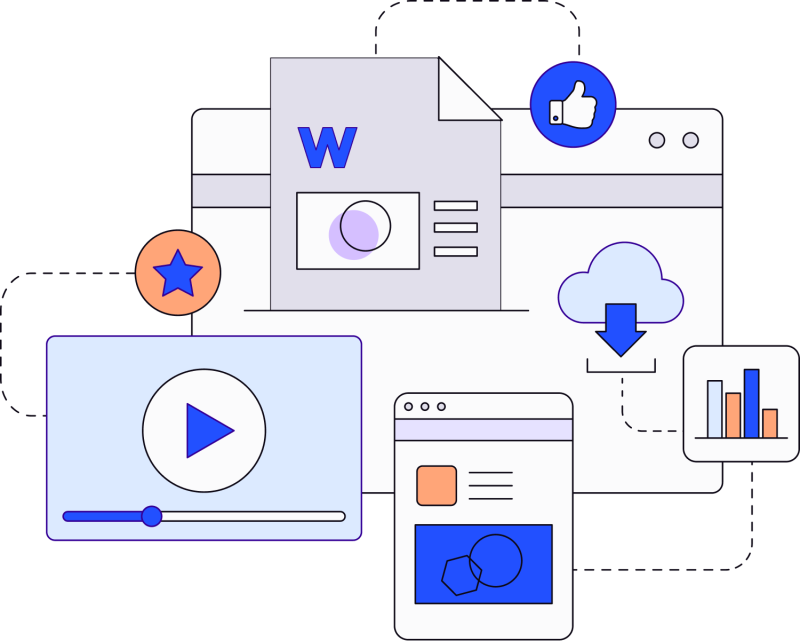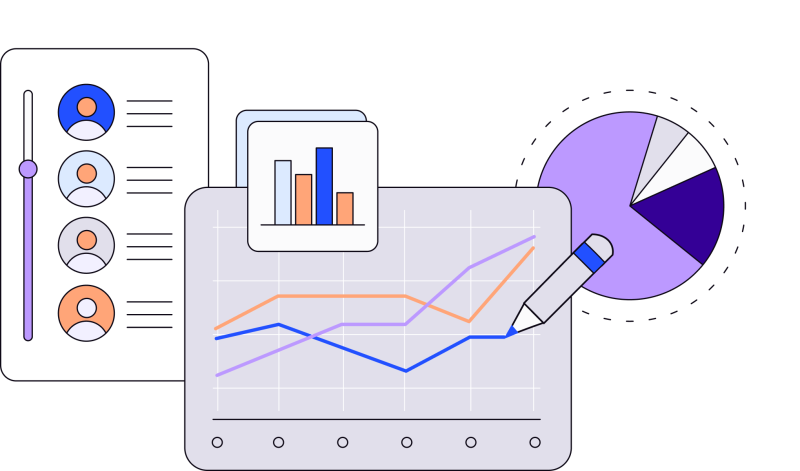We track everything these days: how much we sleep (or don’t), how much water we drink (or don’t, but should), and how many unread books lay stacked on our nightstand. Whether you’re official and use an app or not, you’re probably checking off at least a few stats in your day-to-day life.
Do you know who isn’t tracking key metrics as much as they should? SaaS startups. We’re sorry to call you out like this. But friends don’t let friends not track important stuff.
If this sounds like you, you’re not alone. It’s common for a lot of startups to have a lack of metrics under their belt. Maybe there’s too much else to keep up with. (Running a startup does take a lot of time, after all.) Or maybe it’s unclear what you need to be tracking in the first place.
Whatever the case may be, if you want to grow your SaaS startup, tracking six key metrics is a guaranteed way to kick things into gear.
Let’s get tracking.
Tracking Metrics for Your Digital Product is a No-Brainer
To know where you’re going, you need to know where you’re at first. And while there are infinite possibilities to track and measure, there are only a handful of essential metrics that can put you lightyears ahead. So, yes, it really is doable. And it’s worth it.
Here are the top three reasons you need to start tracking:
To see how great (or not) you’re doing How can you tell what’s working or what isn’t if you don’t measure progress toward achieving your business objectives? Tracking is the easiest way to identify trends, tell if something is working, and point you to problem areas. It’s really that simple.
To make dynamic data-driven decisions Making your decisions based on data is one of the smartest things you could do for your startup. Tracking metrics helps you know what you should be working on, and when. Your findings help prioritize and triage, thereby increasing your productivity.
To help you prove a point When you need to prove something is right, having metrics to back you up makes it a lot easier to convince any skeptics. And, if you need executive approval, good metrics just can’t be (easily) argued with.
The Key 6 Metrics for SaaS Startups to Track (and Why You Need Them)
Without further ado, here are the six metrics you should be tracking. These are the minimum metrics you should have at your disposal if you want to prove your point, woo your investors, and scale your business.

Monthly recurring revenue (MRR) and annual recurring revenue (ARR) Most SaaS products are sold as a subscription. As such, this metric is fundamental in measuring the success of your digital product. It’s the only way to forecast your future cash flow and budget. If you don’t know your MRR and ARR, make this the first thing you start tracking.

Churn Rate (Cancelation rate) This one hurts, but it’s real and if not known can be detrimental to your business. This is the number of customers that cancel each month. Sometimes their credit card expired, or maybe they just didn’t vibe with your product anymore. Whatever the case may be, knowing your churn rate is crucial. Otherwise, you don’t know what’s cutting at your user base — and most importantly, what you need to do about it.

Conversion rate and activation rate Getting new users is always fun to track. These metrics reveal the number of people highly interested in your product. Conversion rate tracks the number of users that sign up and become paying customers. Activation rate tracks when a customer achieves a milestone step in your process that makes them more likely to continue using your product; for example, linking a payment method to their account or sending referrals to their contacts. Both metrics use total number of signups in their calculations, but while conversion rate captures the overall path a customer takes from initial encounter to paying customer, activation rate focuses in on one step of that path. Similar to a sales funnel, these metrics can help you learn more about your users and their engagement with your product.

Lifetime value (LTV) or Customer Lifetime Value (CLV) In a perfect world, your customers would remain with you forever. Unfortunately, users will eventually leave your product. This metric tells you how much money, on average, a customer spends with your company (or your subscription). It answers the question: how much is my customer worth? It’s an easy way to understand the value of a customer, and can help you determine how much money you should plan to spend to acquire them.

Cost of acquiring a customer (CAC) CAC tells you how much it costs to gain a new customer through advertising, media, paid media, or organic marketing. It answers the question: how much does my customer cost? This metric helps you plan your budget accordingly—ideally, your CAC is lower than your CLV so you can make money. Some businesses are okay with breaking even for a while in order to scale, but when looking at CLV and CAC as a fraction (CLV/CAC), you’ll be able to clearly understand the true value of your customer to your business. Is your customer worth double what they cost you? Half? It’s up to you and the answer will vary based on the product.

Monthly active users (MAU) and Daily active users (DAU) If your product is a sticky one, your MAU and DAU numbers will show it. These metrics tell you who’s logging in, who’s interacting with your product, and how active they are over a day or a month. These two metrics can be great predictors of churn. If users go AWOL, that’s a clue for you to investigate and work on your retention strategy.
There are many other metrics that you can track, but these six are fundamental and non-negotiable. Without tracking them, it’s going to be an uphill battle to see any success.
Tool Time: How to Track Your Digital Product’s Most Important Metrics
Eager to start tracking? We thought so. But before you dive in, it’s important to understand that keeping track of these metrics — as well as taking time to analyze them — takes time and consistent effort. As you balance building your perfect digital product, this could mean you need some extra help.
Fortunately, there are many different tools out there that can save you from Spreadsheet Land and give you the data you’re looking for. We’ve found that these three are the best-paid tools for tracking metrics for Fintech and B2B SaaS products:
Bare Metrics: Metrics, dunning, and engagement tools for SaaS & subscription businesses
ChartMogul: Automated reporting and auditing software for transparency on your product
Profitwell: Revenue operations products that reduce churn, optimize pricing, and give you accurate, free revenue reporting.
These tools provide visuals dashboards that can quickly tell you where you stand. Plus, they’re easy to share if you have a few people you need to convince. Looking at you, investors.
Each tool is priced by your MRR. Truth be told, the cost relative to the amount of time that it saves you (and how lifesaving the data can be) is worth it.
If you’re still reading this and haven’t jumped off to start tracking your stats, we appreciate you sticking with us. But what are you waiting for? Happy tracking!









